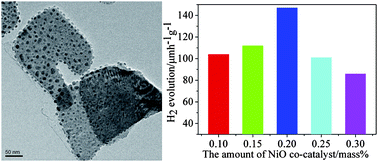Chromium-doped bismuth titanatenanosheets as enhanced visible-light photocatalysts with a high percentage of reactive {110} facets
Abstract
Single-crystalline chromium doped ![[1 with combining macron]](https://www.rsc.org/images/entities/char_0031_0304.gif) 10). Extension of the light absorption from the ultraviolet region to the visible-light region arises from the Cr 2p levels confirmed by
10). Extension of the light absorption from the ultraviolet region to the visible-light region arises from the Cr 2p levels confirmed by


 Please wait while we load your content...
Please wait while we load your content...